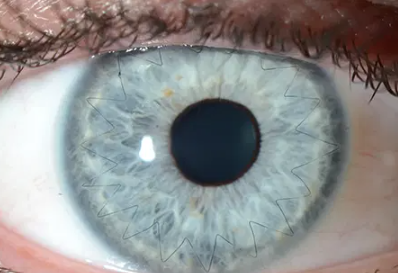News Headlines
- Aug 20 2024 What causes corneal ulcers?
- Aug 19 2024 Endophthalmitis: A Serious Eye Infection
- Aug 15 2024 Discover more about PRK eye surgery
- Aug 9 2024 Key Points you know about refractive surgeries
- Jul 28 2024 Protect yourself from dengue fever: Here's how
- Jul 28 2024 A Silent Threat, It Is Time to Action
- Mar 12 2024 Glaucoma: Early Detection, Lifelong Vision
 Corneal transplant: Restoring vision
Corneal transplant: Restoring visionA corneal transplant, also known as keratoplasty, is a surgical procedure to restore vision by replacing a damaged or diseased cornea with a healthy donor cornea. The cornea is the clear front surface of the eye that helps focus light onto the retina. When the cornea is damaged or diseased, it can cloud vision and cause pain. A corneal transplant can restore vision, reduce pain, and improve the quality of life for people with corneal problems.
Types of corneal transplants
There are several different types of corneal transplants, each of which is used to treat different types of corneal damage. The most common types of corneal transplants are:
* Penetrating keratoplasty (PK): This is the oldest type of corneal transplant, and it involves replacing the entire thickness of the cornea. PK is used to treat severe corneal damage, such as that caused by infection, injury, or certain eye diseases.
* Endothelial keratoplasty (EK): This type of transplant replaces the inner layer of the cornea, called the endothelium. The endothelium is responsible for pumping fluid out of the cornea, and when it is damaged, the cornea can swell and become cloudy. EK is used to treat Fuchs’ dystrophy, a condition that damages the endothelium.
* Anterior lamellar keratoplasty (ALK): This type of transplant replaces the outer layers of the cornea, including the epithelium, stroma, and Bowman’s membrane. ALK is used to treat conditions that damage the outer layers of the cornea, such as keratoconus and bullous keratopathy.
* Descemet’s stripping endothelial keratoplasty (DSEK): This type of transplant is similar to EK, but it only replaces the Descemet’s membrane and the endothelium. DSEK is a less invasive procedure than EK, and it has a lower risk of rejection.
The corneal transplant procedure
A corneal transplant is an outpatient procedure, which means that you will go home the same day as the surgery. The procedure is usually performed under local anesthesia, which means that you will be awake but your eye will be numbed. In some cases, general anesthesia may be used.
During the surgery, the surgeon will first make a small incision in the cornea. They will then remove the damaged cornea and replace it with the donor cornea. The donor cornea will be sewn into place with tiny sutures.
After the surgery, you will need to wear an eye patch or shield for a few days to protect your eye. You will also need to take antibiotic eye drops to prevent infection. You will need to see your eye doctor regularly for follow-up appointments to monitor your healing and adjust your medications as needed.
Risks and complications of corneal transplantation
As with any surgery, there are some risks and complications associated with corneal transplantation. These include:
* Infection: Infection is a serious complication of corneal transplantation, and it can lead to vision loss.
* Rejection: The body may reject the donor cornea, which can cause inflammation and vision loss.
* Glaucoma: Glaucoma is a condition that increases pressure in the eye, which can damage the optic nerve and lead to vision loss.
* Cataract: A cataract is a clouding of the lens of the eye, which can cause vision problems.
* Astigmatism: Astigmatism is a condition that causes blurred vision, and it can be caused by the surgery.
Success rates of corneal transplantation
The success rate of corneal transplantation depends on the type of transplant and the severity of the corneal damage. In general, the success rate is high. For example, the success rate for PK is 90% or more at one year after surgery.
Corneal transplant research
Researchers are continuing to develop new techniques and technologies to improve the outcomes of corneal transplantation. Some of the areas of research include:
* Developing new methods to prevent rejection
* Improving the quality of donor corneas
* Developing artificial corneas
- Please select news categories.
